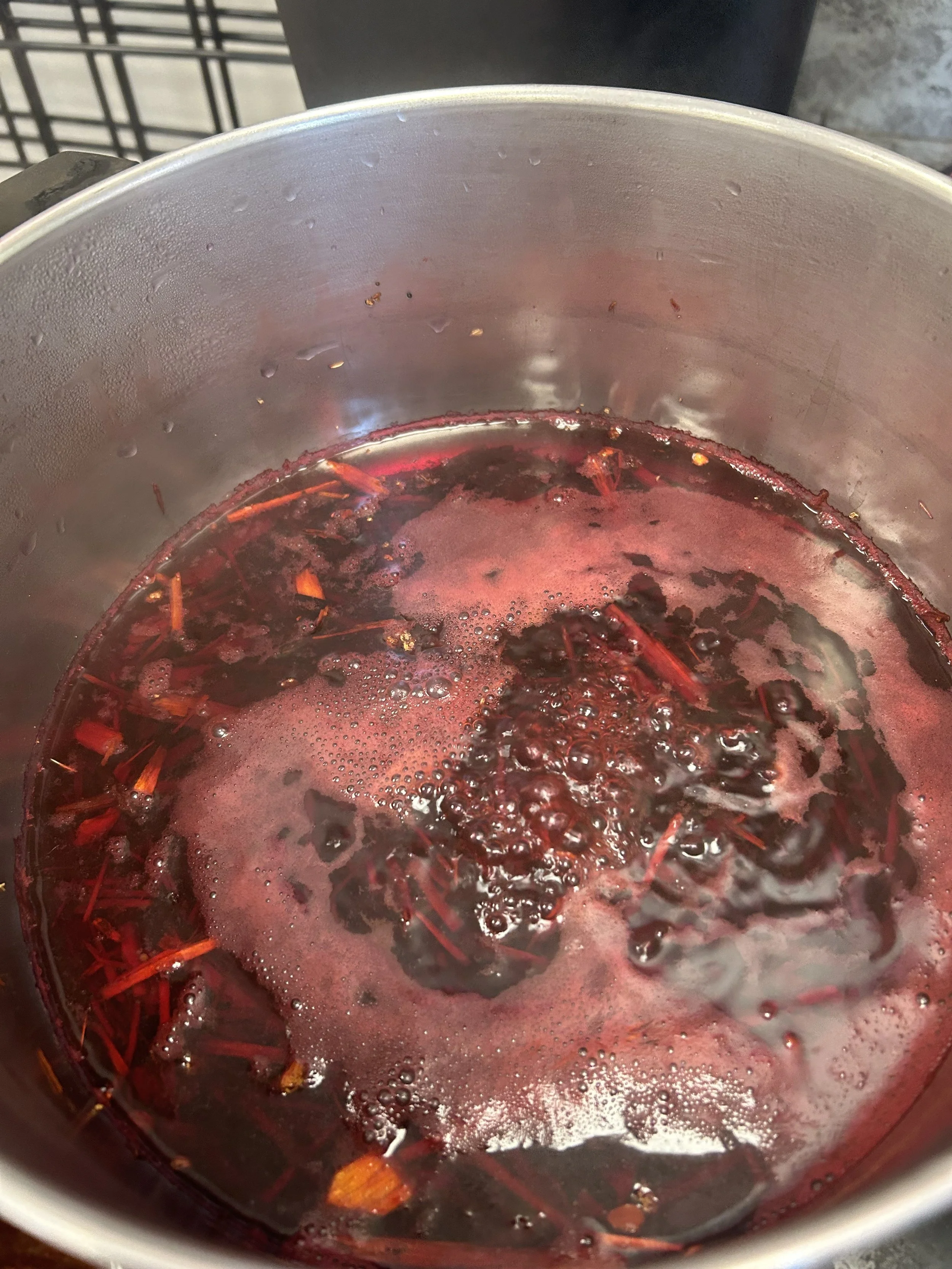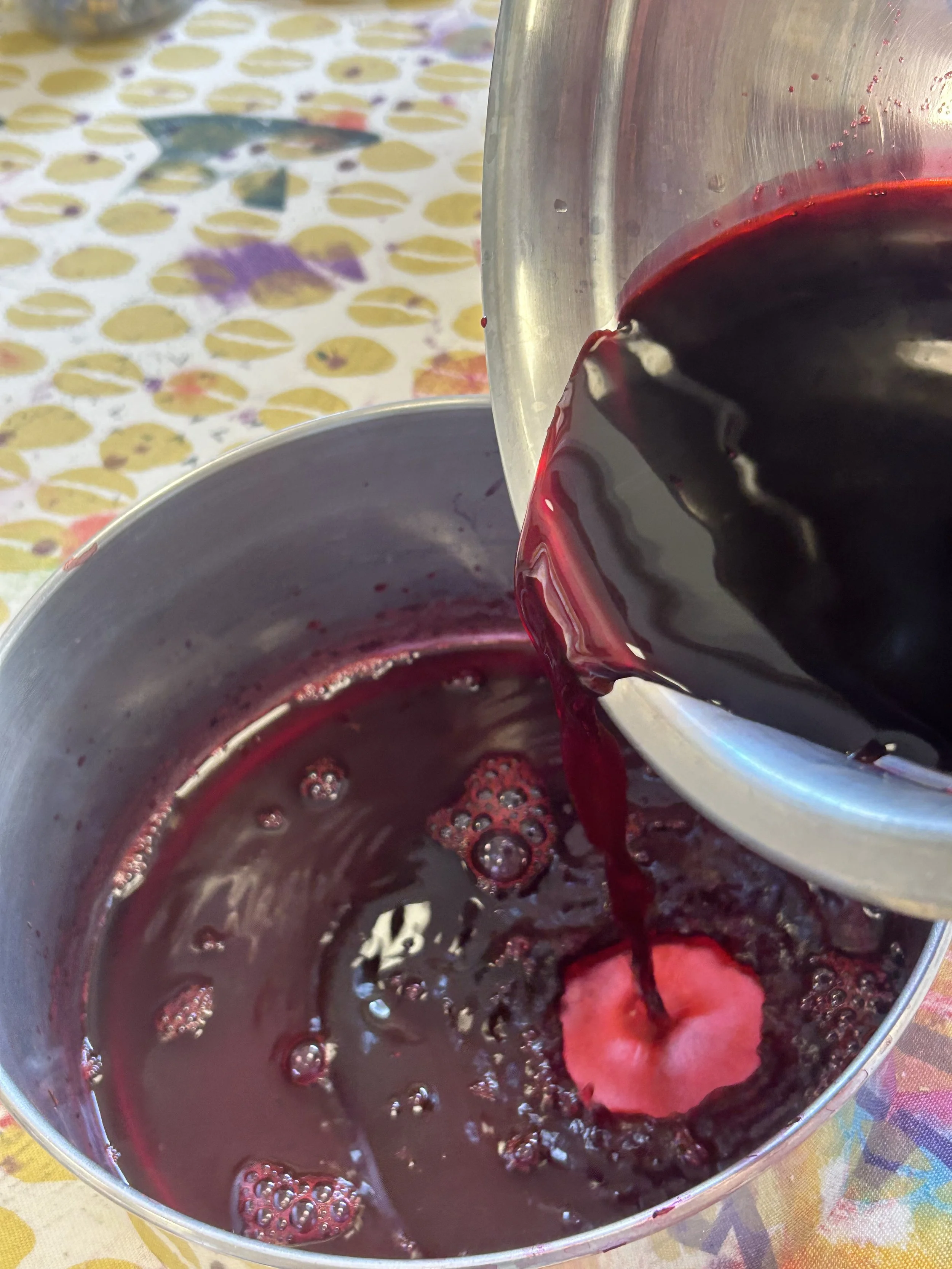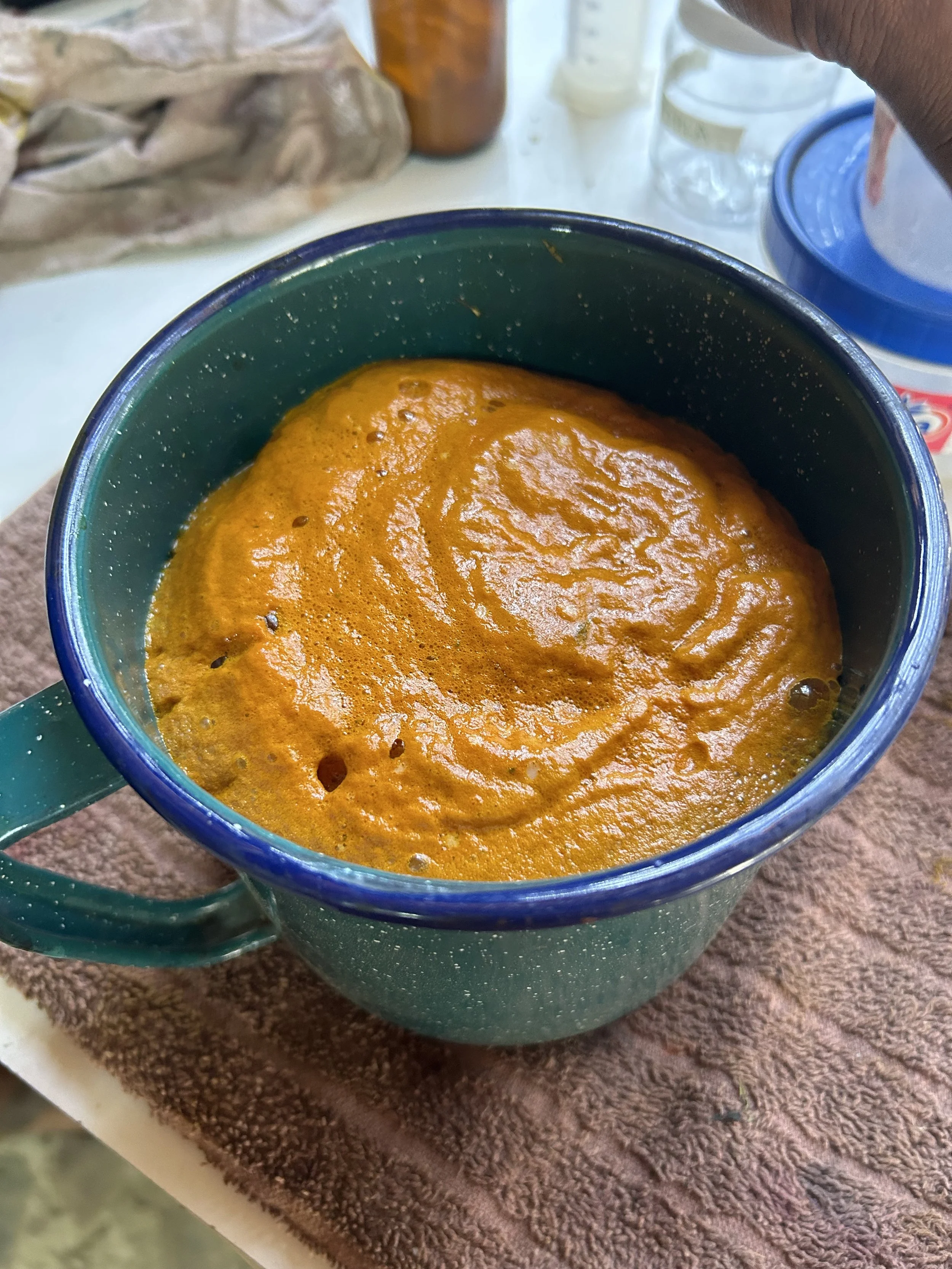Basic recipe for making dry pigments
Materials:
50g of plant matter
8g of alum (16% of the weight of your plant matter)
4g of sodium bicarbonate (8% of the weight of your plant matter) (baking soda also works, also soda ash, but I have not yet tried soda ash, so I can’t give much help about the specifics)
water
Tools:
pot
strainers
filters or fabric to use as filter
stove
food scale (to weigh materials)
mortar and pestle
fine mesh sieve (could use a screen printing screen or something similar)
small bowls or measuring cups
paint muller and slab (optional)
DIRECTIONS:
Put plant matter in pot, cover with water (water should be about 1cm above plant matter) Bring to rapid boil, then reduce heat. Simmer for 40 minutes
Strain, and return plant matter to pot. Cover with water so water is about level with water, or just a little above.
Strain into the liquid from first extraction.
Remove all the debris of the plant matter. It can be saved for additional extractions (1-3 more), or you can repeat the process immediately for this batch 1-3 more times. (Or until you feel there’s no more color coming out)
Pour the extraction liquid back into pot, and simmer for 10 min, or until the liquid is reduced by about half.
In the meantime, heat 50mL of water. Measure out the alum, if it’s solid in rock form, grind to a fine powder with your mortar and pestle. Pour the hot water over the alum and dissolve the alum completely.
Repeat step 7 with the sodium bicarbonate, in a separate bowl.
Once the liquid is reduced, remove from heat.
Stir in the alum.
Slowly pour in the sodium bicarbonate. Your vessel needs to be a bit larger than the liquid, because this will cause a foaming chemical reaction. Gently mix thoroughly. (If it doesn’t foam much, add a bit more sodium bicarbonate.)
Allow to sit a few minutes. Meanwhile prep your filter. You’ll need something to keep your filter from inside the strained liquid. Can be a funnel holder, can be a strainer with feet, can sit suspended above your vessel, whatever you gotta do. I like to use fabric, because there’s so much color that gets left in the filter, and if I use fabric, then I can use it later for different projects.
Once the liquid is strained (this can take minutes, hours, or sometimes even days) the remaining sediment should look almost like a paste. Like jelly beginning to set. Move your filter to lay flat so that it can dry. I put my filters over a baking cooling rack, or even inside two screen printing screens (this allow for air flow, but keeps it clean). Allow to dry completely.
**The remaining liquid can still be used, either as a liquid pigment for paper or fibers. If used for dye, understand the color will be muted as it has been exhausted of most of it’s liquid. But you can extract more color from the saved plant matter. It will still be exhausted, and therefore a lighter color, but will still produce colors.
Simmer your plant matter
Strain it
Mix in the alum, then slowly mix in the sodium bicarbonate
Strain through filter
Allow pigment to dry
Dried pigment
Grind to an extremely fine powder
Usable pigment







